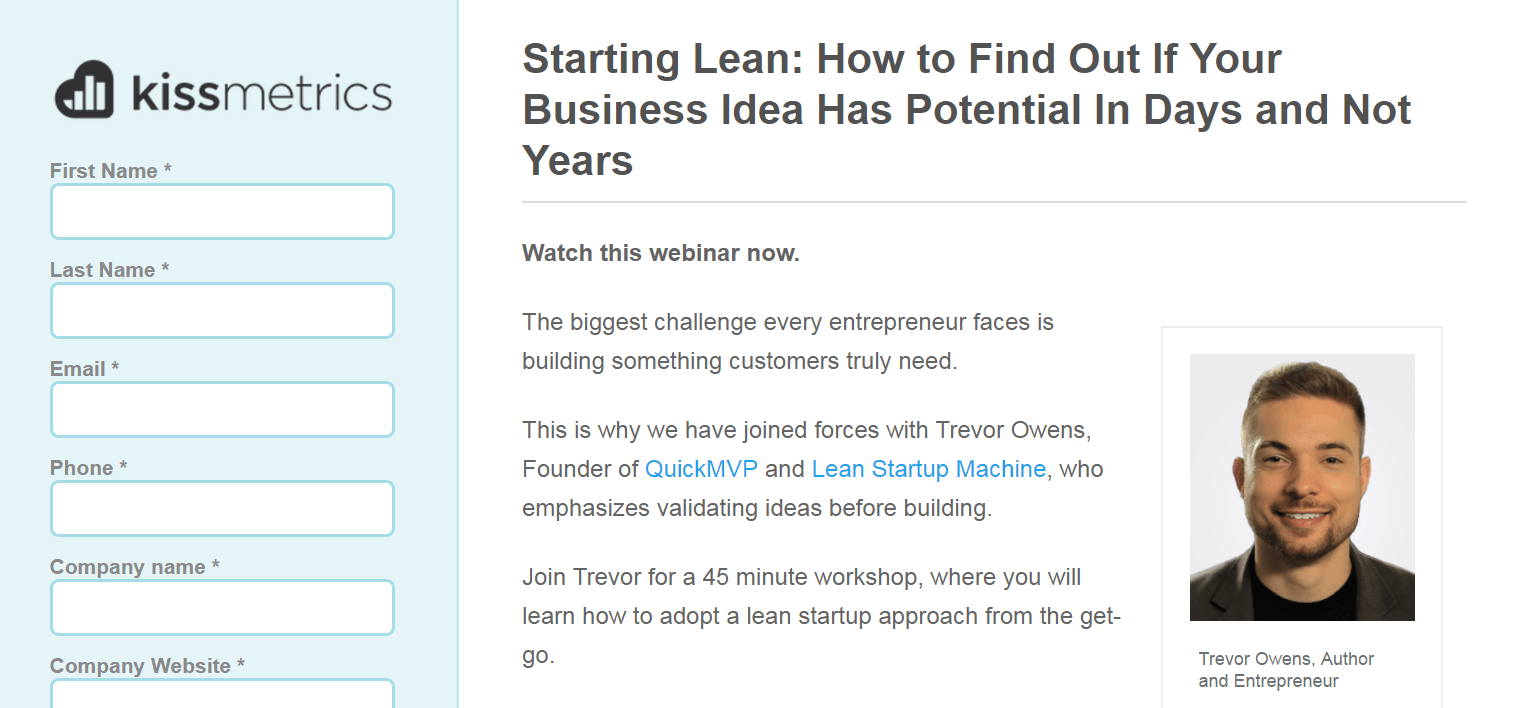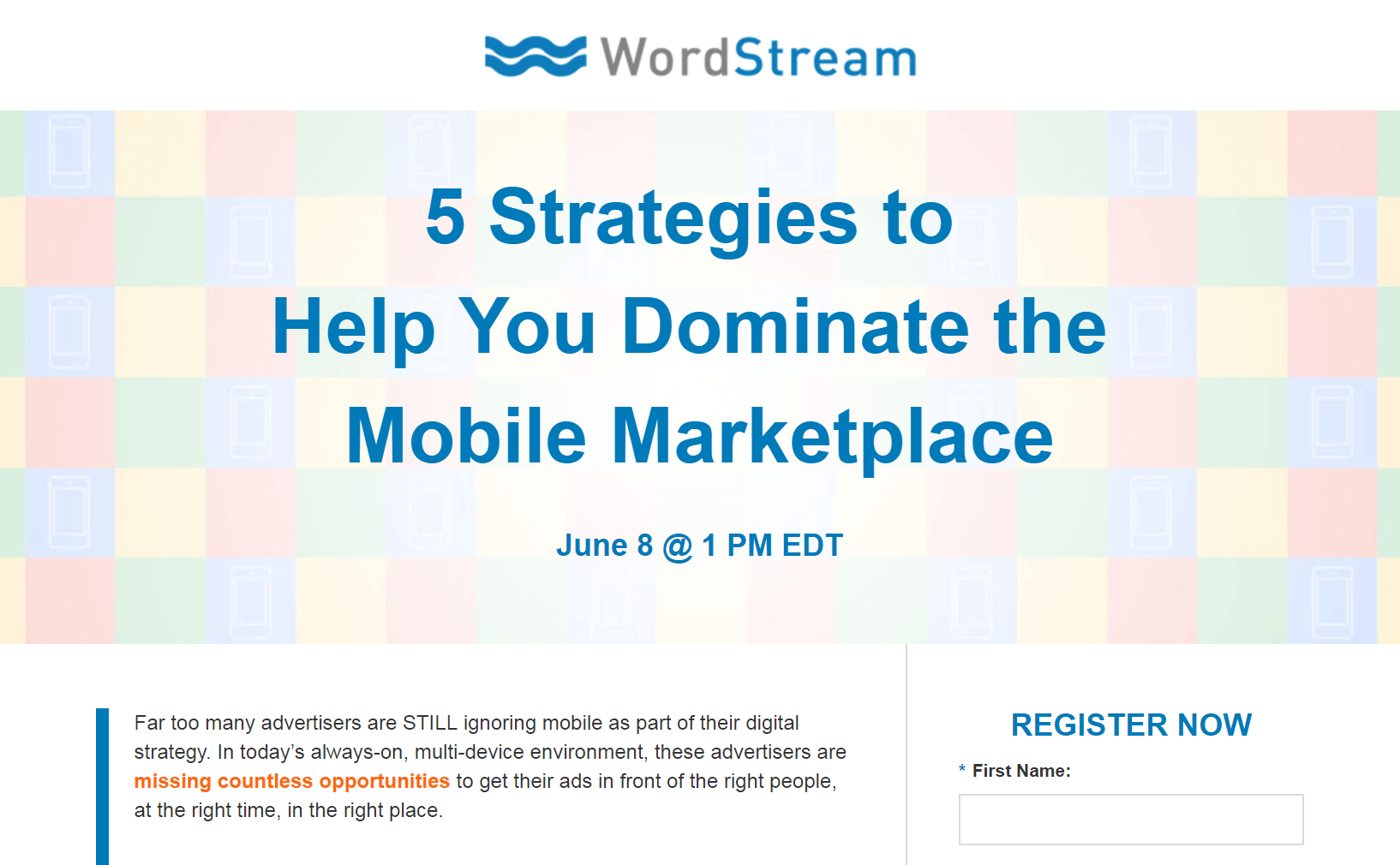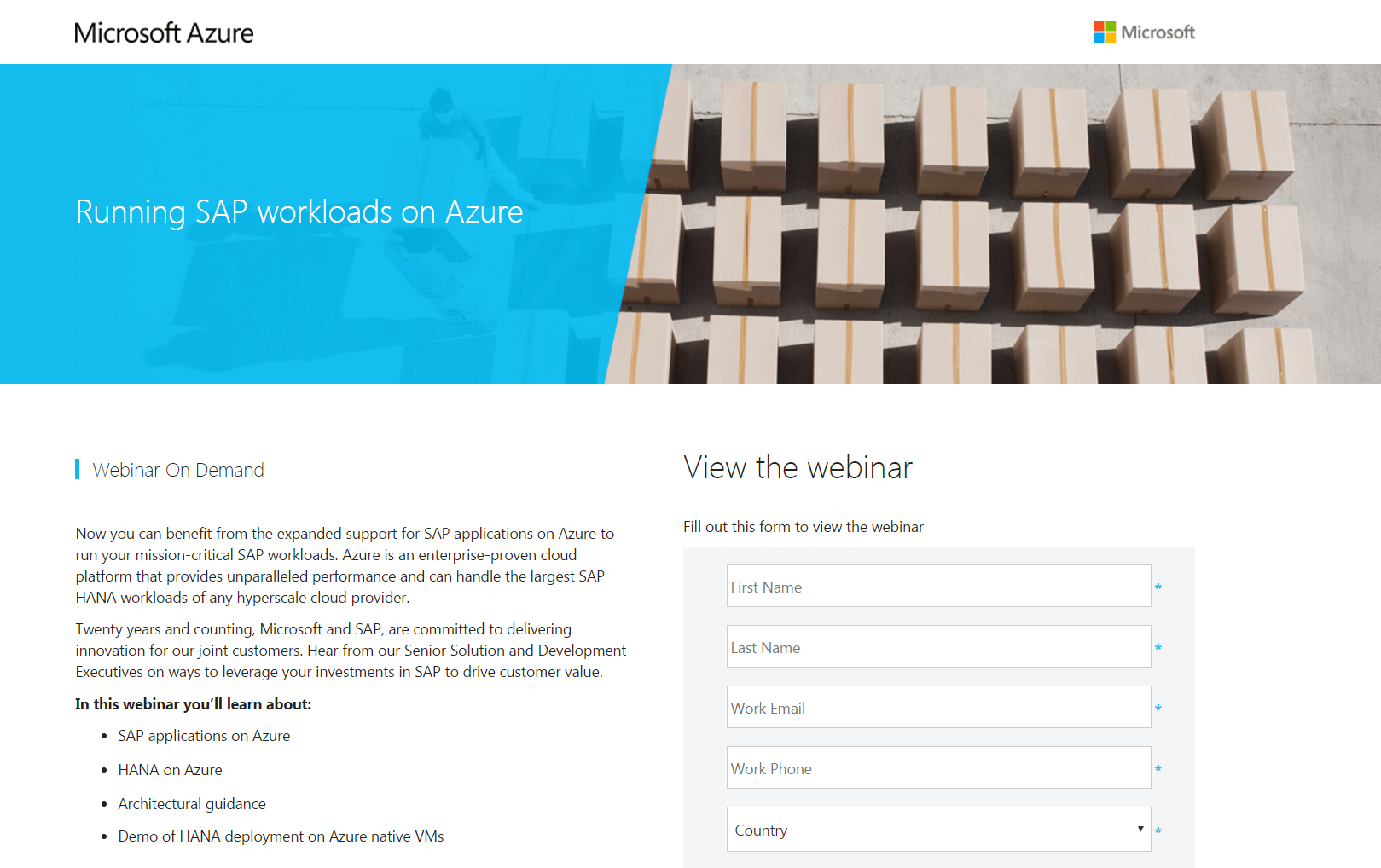As we’ve previously discussed at length, webinars can be the perfect way to engage with your audience and market your products and services. However, like any marketing method, a webinar is not necessarily the best fit for every situation. Since it also represents a significant investment, it’s best to know when to use a webinar before you decide to set one up.
In this post, we’re going to explore four key questions that can help you determine whether a webinar is an effective way to market your content, and offer some advice to help you answer “Yes!” to each one. Let’s begin!
1. Do You Have an Established Audience?

Kissmetrics has no trouble attracting a wide audience to its webinars.
When deciding when to use a webinar, it’s crucial to first consider your attendance figures. After all, webinars are a tool best leveraged to target your existing audience. That’s because they’re most effective when those who are truly interested in your content engage with the webinar and each other – before, during, and after the presentation.
For your webinar to work, you need to know that enough people will participate to create worthwhile discussions. Take Kissmetrics, for example. Its webinars are successful partly due to its massive audience. The company uses those webinars to provide an additional service to its most dedicated users, and to cement its status as an authority on analytics.
There are also practical realities to consider, since it will be harder to convince those unfamiliar with you to put in the time (and possibly money) required to attend. Not every webinar needs a Kissmetrics-sized audience. However, a poor turnout will mean less interaction, and might hurt your credibility.
So before you decide to host a webinar, first take stock of your potential audience. The size you’re shooting for will of course vary. However, it may help to know that the average attendance for a webinar is around 150 people. Also, keep in mind that only about 40% of registrants typically show up for the actual event.
The best way to determine if you’re anywhere close to the numbers you want is to survey your existing user base to gauge their interest. This will enable you to come up with a rough estimate for how many attendees you’ll have. If the result isn’t encouraging, you may want to put aside the webinar for now, and focus instead on growing your audience.
2. Have You Developed the Necessary Professional Connections?

WordStream’s partnership with Google helps it bring in experienced guest speakers.
It’s entirely possible to host an effective and interesting webinar on your own. However, many businesses bring in outside help to serve as panelists or presenters, which is a tactic well worth considering. This is particularly true if you’re intending to create a series of webinars, since it will enable you to inject some variety into your offerings.
External authority figures or experts can provide your webinar with a great deal of credibility. They can also leverage their existing audiences to bolster your attendance. Plus, they’ll have their own areas of knowledge and fresh perspectives, which means you can use your webinar to provide your user base with information and insights you couldn’t offer on your own.
For an example of this strategy in action, you can take a look of the webinars hosted by WordStream. This advertising company is partnered with Google, and it leverages that relationship via its content. Guest speakers from various Google departments bring credibility and recognition to WordStream’s webinars, and make it possible to explore subjects outside of the company’s particular expertise.
You may not have access to Google employees, but you can certainly make use of professional connections for planning when to use a webinar. Start by taking a survey of your resources, both internally and externally. Try to determine if you know anyone who would be willing to participate in your webinar. This may be easier than you think, since there are plenty of places to find great speakers.
However, if there’s no-one suitable in-house, and you think your webinar would benefit from one or more guest presenters, consider working on networking and building partnerships first.
3. Are Your Ideas Worth Sharing?

Best Buy offers webinars on topics both related to its expertise and of interest to a broader audience.
A webinar is an investment on the part of your viewers. They’re giving up valuable time and possibly money to hear what you or your presenters have to say. So while you probably want to use your webinar as a marketing opportunity, it’s important to remember that your efforts will only succeed if you fulfill your audience’s needs in some way.
What your webinar provides can come in many forms. For example, you could focus on advice, instructional content, or new insights on an old topic. No matter what the format is, the key is to offer fresh, compelling material to get people to tune in.
Take a look at Best Buy for a good illustration of this concept. This electronics retailer may not be the first place you’d think to look for fresh new ideas. Yet they offer webinars that leverage their experience with technology to explore relevant topics of interest to a wider audience, such as digital education.
As this example demonstrates, your own webinar topic doesn’t have to be entirely original. You just need to be able to put your own unique spin on it. Start out by considering your niche and your target audience, and ask yourself what your users find important or need help with.
This should help you come up with some strong ideas, and also help you decide when to use a webinar. However, if you’re struggling to find the right idea, you may need to spend some more time refining (or developing) your niche and target audience profile.
4. Can You Spare the Time and Resources Required?

Microsoft has the resources to run effective webinars on many different subjects.
Although a webinar can be a fairly cost-effective marketing tool, it still requires some investment. At the very least, you’ll need to spend a significant amount of time preparing for the event and spreading the word. Plus, there’s a good chance you’ll need to shell out some cash for equipment, marketing tools, presenters, and more.
The more resources you have, therefore, the easier it is to pull off a strong webinar. The most successful companies, such as Microsoft, have no trouble with this requirement. They have the money and manpower to create targeted webinars on all kinds of niche topics. However, you are probably working with a tighter budget, so you need to be prepared. A webinar is an excellent supplemental tool, but you shouldn’t have to sacrifice the quality of your regular content to make it happen.
Therefore, when considering when to use a webinar, you’ll first want to take a close look at your budget and time constraints. Be honest with yourself and your team about whether you have what you need to pull the event off. It’s also smart to do some research into what the webinar will cost you, so you’ll know beforehand if you’re getting in over your head.
Do you have the resources to create a webinar that will shine the best possible light on your business, and offer something your audience will truly appreciate? If not, it’s better to wait until you can answer the question with a resounding “Yes”, rather than putting out a webinar that doesn’t reflect your true capabilities.
Conclusion
Webinars have become a popular and successful marketing tool, but that alone doesn’t mean you should jump on the bandwagon. When used correctly, a webinar can engage your audience and drive conversions, but it could just as easily drain your resources without providing much of a return. Before committing to an endeavor like this, it’s smart to think ahead and figure out whether it will truly benefit you in the long run.
There are a lot of considerations involved in deciding when to use a webinar. Here are four factors that will let you know when it’s time to take the plunge:
- You have an established audience.
- You’ve developed the necessary professional connections.
- Your ideas are worth sharing.
- You can spare the time and resources required.
Do you have any questions about how to decide when to use a webinar? Ask away in the comments section below!
Article thumbnail image by Vector Goddess / shutterstock.com.









Leave A Reply